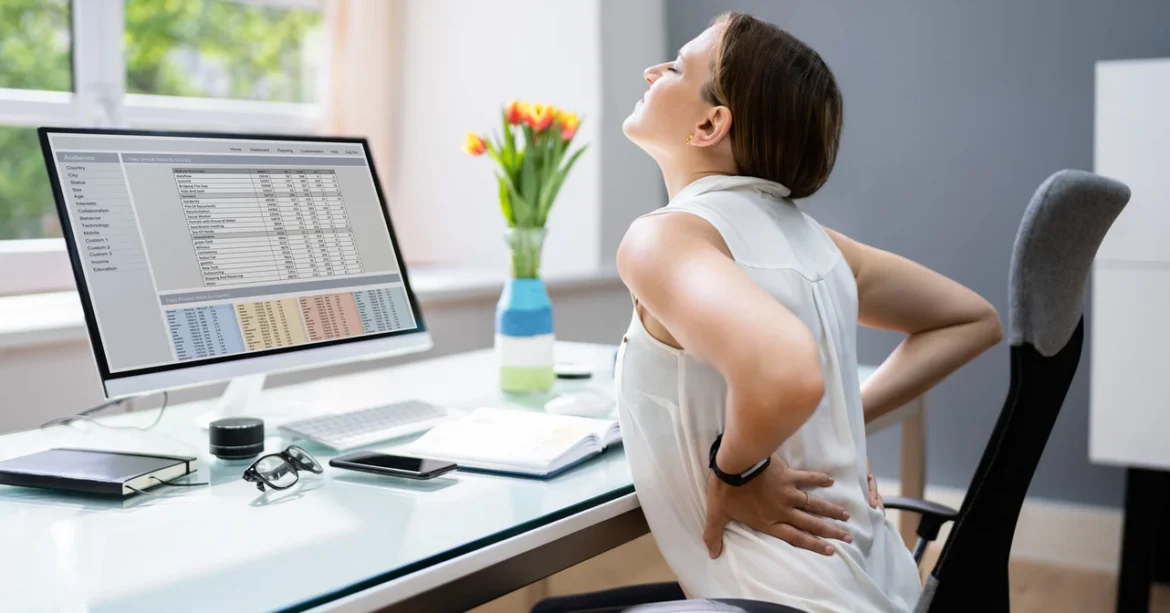The Role of Breathing and Mindfulness
Posture doesn’t just influence muscles; it affects breathing. Hunched positions compress the ribcage, limiting lung expansion and oxygen intake. Controlled, deep breathing integrated into massage sessions can help restore natural respiration patterns, calm the nervous system, and enhance relaxation.
Mindfulness techniques, such as guided visualization or breath awareness, complement hands-on therapy. For desk workers, these elements help shift attention away from habitual tension and create a holistic sense of release.
Ergonomics Meets Wellness
The connection between posture and relaxation underscores the importance of ergonomics in everyday life. Adjusting chair height, monitor level, and keyboard placement can significantly reduce chronic tension. UK therapists increasingly incorporate ergonomic guidance into consultations, ensuring that massage benefits are supported by healthy work habits.
Some spas and wellness centres are now offering “desk posture packages,” combining chair-side ergonomic assessments with targeted massage and stretching sessions. These programs not only relieve existing tension but also prevent recurrence, bridging professional advice and therapeutic care.
Micro-Movements and Office Breaks
Small, deliberate movements throughout the workday complement massage treatments. Shoulder rolls, chest openers, seated twists, and short walks can prevent the accumulation of muscular stress. Therapists often provide tailored routines, enabling clients to maintain relaxation benefits between sessions.
Incorporating micro-movements into the daily routine enhances circulation, reduces stiffness, and improves energy levels. When combined with massage, these practices help clients experience sustained wellbeing rather than a temporary post-treatment “high.”
Technological Support
Wearable devices and posture monitors are gaining popularity among UK office workers. These tools provide real-time feedback, alerting users when they slouch or remain sedentary for prolonged periods. Therapists may use data from these devices to guide massage techniques or recommend specific stretches, making sessions more targeted and effective.
Technology also supports at-home wellness. Portable massage tools, foam rollers, and stretching devices allow clients to extend the benefits of professional sessions. By integrating technology with hands-on therapy, the gap between work stress and relaxation can be bridged more effectively.
Psychological Impact of Desk Tension
Chronic postural stress doesn’t only affect the body; it impacts mental wellbeing. Muscle tension can contribute to headaches, irritability, and reduced focus. Massage that addresses posture-related tension often produces noticeable psychological benefits: clients feel lighter, calmer, and more alert.
The ritual of massage itself reinforces relaxation habits. Scheduled sessions act as mindful pauses in otherwise sedentary routines, encouraging clients to prioritise self-care amidst the demands of modern work life.
Customising Massage for Desk Workers
Personalisation is essential. Therapists often begin with a postural analysis, identify key areas of tightness, and customise techniques to each client’s specific lifestyle. Treatments may combine deep tissue work, stretching, and relaxation methods for a balanced approach.
UK clients report that these personalised sessions provide more meaningful results than generic massages. By addressing both cause and effect, therapists help restore balance, mobility, and a sense of ease.
Long-Term Benefits
Consistent massage targeting desk-induced tension can yield cumulative benefits. Improved posture, reduced muscle strain, better circulation, and enhanced mobility contribute to overall health and wellbeing. Clients often notice that discomfort diminishes, energy levels increase, and daily activities become more comfortable.
Over time, combining ergonomic adjustments, daily micro-movements, and targeted massage fosters sustainable relaxation. Rather than relying solely on occasional sessions, clients develop habits that support posture, wellness, and long-term comfort.
Conclusion
Desk posture significantly influences how the body experiences tension and relaxation. In 2025, UK massage therapists are responding with targeted techniques, ergonomic guidance, and holistic strategies that address both muscular and mental strain.
By focusing on the neck, shoulders, back, and supporting areas, therapists help clients counteract the effects of prolonged sitting. Incorporating breathing exercises, mindfulness, and practical office routines amplifies benefits, transforming massage into a comprehensive wellness strategy.
Ultimately, massage is no longer just a luxury; it is an essential tool for modern desk workers seeking relief, relaxation, and postural balance. By understanding the connection between sedentary habits and muscular tension, clients can optimise their wellness journey — enjoying the full spectrum of benefits that skilled massage has to offer.

